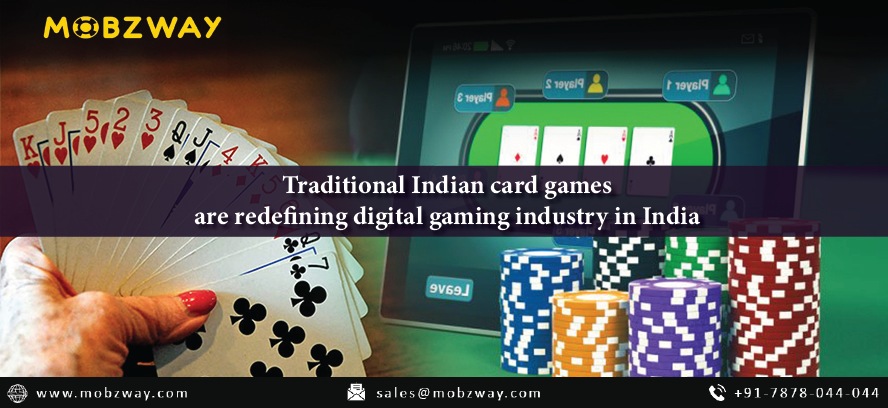Contact Us
In the Indian subcontinent, the gaming culture started with the introduction of games like Tetris, Snake, Bouncing Ball and Space Impact, on the basic feature phones. And on PCs, the games were limited to options like Super Mario, Solitaire and Pacman. But with the increasing popularity and usage of smartphones, the digital gaming industry in India has grown rapidly.
India currently ranks fifth among the world’s top mobile gaming markets and has more than 220 million gamers who spend an average time of 42 minutes on mobile games every day. NASSCOM data projects that by 2020, the Indian mobile gaming market will witness a massive reach of 628 million users, valuing the market to $1 Billion.
Long time back, when the virtual gaming didn’t exist in India, the Indian gamers used to quench their gaming thirst with the traditional card games like Rummy, Bluff, Teen Patti etc. On various special occasions and get-togethers, these traditional card games were the mode of joy and entertainment for families and friends in India. However, with the nuclear family patterns, busy lifestyles, and more preference for outings, the trend of indoor games gradually faded.
In recent years, the new tech-savvy generation developed an interest for the western games like PUBG, Angry Birds, Candy Crush Saga and so on. With more and more interesting games coming on the virtual stores, the digital gaming industry is seeing a high engagement.
Gamers in India are spending more time on mobiles and tablets to utilize their entertainment hours. The increasing interest in virtual gaming has motivated the homegrown gaming developers to reinvent the traditional Indian games.
This has led to the evolution of many card game development companies who are coming up with different card game options to engage and appeal the domestic gamers. These card game development firms are creating interesting versions of desi card games like Rummy and Teen Patti with a shout out of bringing the lost traditional games back.
The biggest advantage to these card game developers comes in the form of iOS and Android apps, which allows them to build and offer these games at ultra-low commercials. Also, the localization of games and technologies along with a user-friendly interface has worked in the favour of domestic game builders. To target the Indian customers more efficiently, they are making these games available in various local languages.
The key advantage of taking these traditional games offline to online is that it gives plenty of convenience to the players as they can play the game at any given time, as per their convenience.
Games like Teen Patti being in the list of top 10 most grossing gaming apps in India’s Google Play Store (as per Annie App) are a sign that the traditional Indian card games are setting new benchmarks for the digital gaming industry in India.




